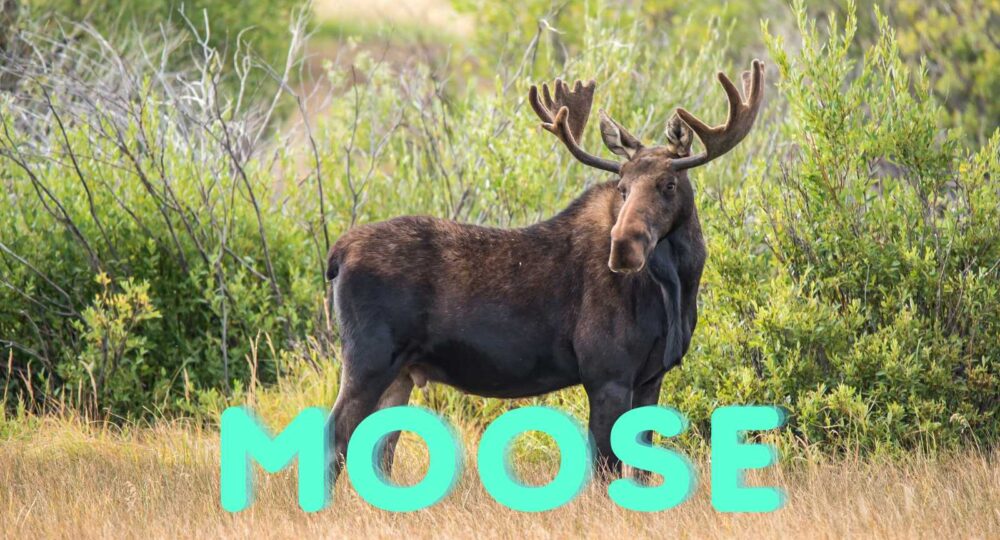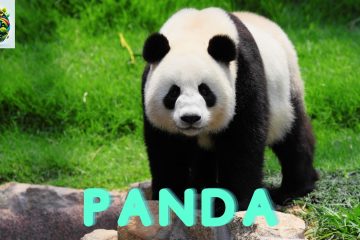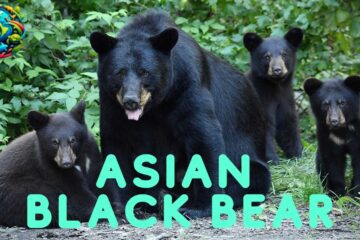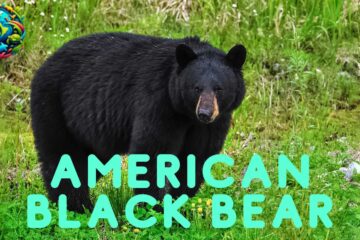
Moose: Giants of the Northern Wilderness
Moose: Giants of the Northern Wilderness
Introduction
The moose, the largest member of the deer family, is a symbol of the northern wilderness. Known for their impressive size, distinctive antlers, and solitary nature, these majestic creatures inhabit the boreal and mixed deciduous forests of the Northern Hemisphere. With their unique adaptations to cold climates and significant ecological roles, moose captivate wildlife enthusiasts and researchers alike. This article delves into the fascinating world of these forest giants, exploring their habitats, physical characteristics, behaviors, and much more.
Amazing Facts
These giants boast numerous intriguing attributes:
- Size: Adult males, or bulls, can weigh up to 1,600 pounds (725 kg) and stand 6 feet (1.8 meters) tall at the shoulder. Females, or cows, are slightly smaller.
- Antlers: Bulls grow massive, palm-shaped antlers that can span up to 6 feet (1.8 meters) wide. These antlers are shed and regrown annually.
- Adaptations: They are well-adapted to cold climates, with a thick coat of hollow hair that provides insulation and buoyancy.
- Diet: Their diet consists of aquatic plants, shrubs, and tree bark. They can consume up to 70 pounds (32 kg) of food per day.
- Swimming Ability: These animals are excellent swimmers, capable of swimming several miles at a time and diving up to 18 feet (5.5 meters) underwater to feed on aquatic vegetation.
Habitat and Food
These creatures are highly adapted to their environments, where they play a crucial role in their ecosystems.
Habitat:
- Found in boreal and mixed deciduous forests across North America, Europe, and Asia.
- They prefer habitats with abundant water sources, such as lakes, rivers, and wetlands, which provide food and cover.
- These animals are often found in areas with a mix of forested and open landscapes, allowing them to browse on a variety of vegetation.
Food:
- They are herbivores, with a diet consisting of leaves, twigs, bark, roots, and aquatic plants.
- In summer, they feed on a variety of aquatic vegetation, which provides essential minerals and nutrients.
- During winter, they browse on shrubs and the bark of trees such as willows, birches, and aspens.
- Their keen sense of smell helps them locate food, even under snow.
Appearance
These forest giants are known for their impressive and distinctive appearance. Key characteristics include:
- Size: They are the largest members of the deer family, with males weighing up to 1,600 pounds (725 kg) and females weighing up to 1,300 pounds (590 kg).
- Color: Their coat is generally dark brown to black, with lighter legs. The thick, shaggy fur provides insulation against cold weather.
- Antlers: Bulls grow large, broad, palmate antlers that can span up to 6 feet (1.8 meters) wide. These antlers are used for display and combat during the rut.
- Build: They have long legs, a humped back, and a distinctive dewlap, or “bell,” hanging from their throats.
- Face: They have a long, flexible nose, large ears, and keen eyesight adapted for foraging in dense vegetation.
Types/Subspecies of Moose
There are several subspecies, each with unique traits and adaptations to their specific environments:
- Alaskan Moose (Alces alces gigas): Found in Alaska and western Yukon, this is the largest subspecies, known for its impressive size and antlers.
- Eastern Moose (Alces alces americana): Inhabits eastern Canada and the northeastern United States, recognized for its large size and dark coloration.
- Shiras Moose (Alces alces shirasi): Found in the Rocky Mountains, particularly in Wyoming, Idaho, Montana, and southern Alberta, this subspecies is smaller than its Alaskan and Eastern counterparts.
- European Moose (Alces alces alces): Native to northern Europe, including Scandinavia and Russia, this subspecies is similar in size to the Eastern moose but has slightly different antler shapes.
Predators and Threats
Despite their size and strength, these animals face various natural and human-induced threats that impact their survival.
Natural Predators:
- Bears: Grizzly bears and black bears may prey on calves and occasionally adult moose.
- Wolves: Packs of wolves are among the primary predators, often targeting young, old, or sick individuals.
- Humans: Hunting poses a significant threat, although it is regulated in many areas to maintain population balance.
Threats:
- Habitat Loss: Urban development, logging, and agriculture reduce available habitats.
- Climate Change: Alters habitats and food availability, potentially impacting populations.
- Disease: Parasites such as brainworm and winter ticks can cause significant mortality, particularly in warmer winters.
- Vehicle Collisions: These large animals are often involved in collisions with vehicles, posing risks to both the animals and humans.
Mating
These animals exhibit unique and complex mating behaviors, essential for the continuation of their species.
- Breeding Season: The rut occurs from late September to early October.
- Courtship Displays: Bulls attract cows by emitting deep, resonant calls and displaying their antlers. They also engage in “rut pits,” where they dig shallow pits and urinate in them, marking their territory.
- Territoriality: During the rut, bulls become highly aggressive and will fight other males for access to females. These battles can be intense, with antlers clashing until one male retreats.
- Gestation and Birth: After a gestation period of about 230 days, females give birth to one or two calves, usually in late May or early June. Calves are hidden in dense vegetation for protection and are weaned by the fall.
How They Communicate
These animals use various methods to communicate with each other, particularly during mating and social interactions.
Vocalizations:
- Grunts and Calls: Bulls produce deep grunts and bellows during the rut to attract females and establish dominance.
- Cow Calls: Females emit a series of moans and wails to signal their presence and readiness to mate.
- Calf Calls: Calves communicate with their mothers through high-pitched bleats.
Body Language:
- Posturing: Bulls use displays of their antlers and body postures to assert dominance and intimidate rivals.
- Tail Flicking: They flick their tails to signal alertness and readiness to flee from predators.
Chemical Signals:
- Scent Marking: Bulls use scent glands and urine to mark their territory and signal reproductive status.
Religious and Cultural Significance
These forest giants hold significant symbolic and cultural importance in various societies:
Indigenous Cultures:
- Spiritual Symbol: Many Native American tribes view the moose as a symbol of strength, endurance, and survival. They feature prominently in myths, legends, and ceremonies.
- Hunting Traditions: Indigenous peoples have traditionally hunted these animals for their meat, hides, and antlers, using sustainable practices that honor the animal’s spirit.
Modern Symbolism:
- Conservation Icon: They are often used in conservation campaigns to raise awareness about wildlife protection and the importance of preserving natural habitats.
- Popular Culture: These animals appear in various forms of media, from literature and art to movies and advertising, symbolizing wilderness and the great outdoors.
Movies Featuring These Majestic Animals
Moose have been featured in various films and documentaries, showcasing their behaviors and the challenges they face:
- “Brother Bear” (2003): An animated film featuring two comedic moose characters, Rutt and Tuke, highlighting the cultural significance and appeal of these animals.
- “The Moose: Life of a Twig Eater” (2015): A documentary that provides an intimate look at the lives of these forest giants in the Canadian Rockies.
- “Planet Earth II” (2016): The “Mountains” episode includes stunning footage of these animals in their natural habitat, showcasing their interactions with other wildlife.
- “Moose: A Year in the Life of a Twig Eater” (2016): Another insightful documentary that follows a mother and her calf through the seasons, exploring their survival strategies.
Pronunciation in Different Languages
The term for these majestic creatures is pronounced differently across various languages, reflecting linguistic diversity:
- English: /muːs/
- Spanish: /alce/
- French: /orignal/ or /élan/
- German: /Elch/
- Italian: /alce/
- Mandarin Chinese: /驼鹿 (tuólù)/
- Japanese: /ヘラジカ (herajika)/
- Russian: /лось (los’)/
- Arabic: /موظ (mawz)/
- Hindi: /मूस (mūs)/
FAQs
Q: What do these animals eat? A: They are herbivores, with a diet that includes leaves, twigs, bark, roots, and aquatic plants. In summer, they feed on aquatic vegetation, while in winter, they browse on shrubs and tree bark.
Q: Where do they live? A: These animals inhabit boreal and mixed deciduous forests across North America, Europe, and Asia. They prefer areas with abundant water sources and a mix of forested and open landscapes.
Q: How do they communicate? A: They communicate through vocalizations such as grunts and calls, body language including posturing and tail flicking, and chemical signals like scent marking.
Q: Are they endangered? A: While most populations are stable, they face threats from habitat loss, climate change, disease, and vehicle collisions. Conservation efforts are essential to protect their populations.
Q: What is unique about their reproduction? A: These animals typically have a breeding season in late September to early October. Bulls engage in courtship displays and territorial battles, and females give birth to one or two calves after a gestation period of about 230 days.
The moose symbolizes the beauty and resilience of the northern wilderness, playing a vital role in its ecosystem and human culture. This exploration highlights their unique traits and behaviors, celebrating the complexity and charm of these remarkable forest giants.






